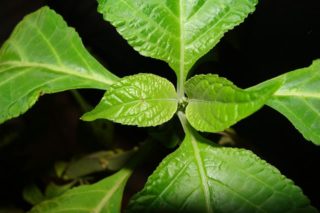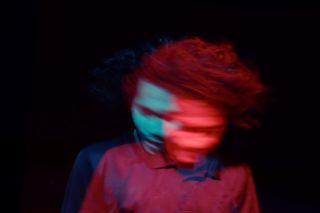Salvia is the genus name for hundreds of plants in the mint family, but one causes potentially dangerous effects and can even be addictive. While many varieties of salvia are used for cooking, decorative shrubbery, and religious ceremonies, the use of psychoactive salvia has been on the rise. Recreational use of salvia has been a concern because it contains the strongest naturally-occurring hallucinogen. Due to the popularity and prevalence of this drug, it is important to be aware of salvia’s effects. Although not as many teens and young adults have been using salvia in the past, its availability is still attractive to those not old enough to get other legal or illegal substances. In addition, salvia use has been linked to other drugs and undesirable behaviors that could cause additional problems in your or a loved one’s life.In this article, you will learn what salvia is, where it originated, what it is used for, methods of consumption, and how it affects the mind and body. You will also gain a better understanding of why it is believed to be dangerous, along with measures you can take to avoid potential addiction.
Salvia Effects: Unknown Dangers of a Potent Hallucinogenic Drug


Table of Contents
What Is Salvia?
There are more than 950 species of salvia, which is an herbaceous, woody plant found on almost every continent. People use some varieties of salvia for cooking, such as mint and sage. Other popular flowering species are planted as ornamental annuals in temperate climates and perennials in tropical climates. Salvia divinorum (means “sage of the diviners”), in particular, is a rare species native only to southwest Mexico, where it has a long history of being used medicinally and religiously.The genus and species name of this psychoactive plant, Salvia divinorum, is derived from the Latin words salvere (means “to feel well”) and divinorum (means “ghost”). In 1962, botanists Carl Epling and Carlos Játiva described and named the plant1http://www.joseluisdiaz.org/wp-content/uploads/2013/07/0005CDAR.pdf because of its use in divination and healing rituals, the more correct name should be divinatorum (meaning “priest”). In Mexico, salvia is called Hojas de la Pastora, which means, “shepherd’s leaves,” in Spanish. There are many common street names, including:
- Salvia
- Diviner’s Sage
- Seer’s Sage
- Sage of the Seers
- Lady Salvia
- Purple Sticky
- Magic Mint
- Leaf of Prophecy
- Sally D
- Lady Sally
- The Female
- Maria Pastora
- Incense Special
- Shepherdess’s Herb
Salvia is an herb that grows like a shrub from about 1.5 to five feet tall. It has hairy, egg-shaped leaves with jagged edges and square-shaped stems. The flowers have white petals surrounded by violet-blue appendages. Salvia rarely produces seeds that grow. Instead, new plants are grown from cuttings from the parent plant, which originally came from Mexico. When the leaves are dried and crushed, they turn a dark color from green to brown to almost black.Are you or a loved one using salvia and wondering if it is harmful? Let Windward Way Recovery guide you.
Brief History of Salvia
The history of salvia’s origins is unclear. Salvia naturally grows in the Sierra Mazateca mountain region of Oaxaca, Mexico. This area is known by the indigenous Mazatec people who live there as, “The Divine Land.” However, researchers are unsure if it is a wild plant that originated in Mexico or was introduced by the Mazatec Indians. They are also not sure whether the plant is a hybrid (combination of different species) or a cultigen (evolved species due to human interaction). The first record of salvia2https://www.samorini.it/doc1/alt_aut/ek/johnson-the-elements-of-mazatec-witchcraft.pdf and its effects was noted in 1939 by anthropologist Jean Basset Johnson, who was studying Mazatec shamanism.Mazatec shamans, religious practitioners believed to have connections with the spirit world, have used psychoactive plants, mushrooms, seeds and tobacco3http://www.joseluisdiaz.org/wp-content/uploads/2013/07/0005CDAR.pdf for centuries. Shamans typically crush or ground fresh salvia leaves to extract plant juices, which they mix with water to create a tea-like drink. The effect of salvia puts them in a trance-like state. This helps them conjure up visions while they perform rituals in honor of the Holy Trinity and various saints. The Mazetec people named the plant Ska María Pastora (means “leaf” and “Virgin Mary” and “shepherdess”) because they see the plant as an incarnation of the Virgin Mary.In the 1990s, ethnobotanist Daniel Siebert studied Salvia and identified salvinorin A4https://pubmed.ncbi.nlm.nih.gov/7526076/, the substance responsible for the psychoactive effects of the plant. In 1998, Sacred Weeds, a documentary about how psychoactive plants affect cultures, was shown in the United Kingdom. The film included the investigations of Siebert and several other scientists. Since then, salvia has become more available as a hallucinogen herb for recreational use, particularly among adolescents and young adults. In fact, the 2000s saw a social media trend in which teens were sharing YouTube videos of themselves using salvia, which resulted in more than a million views5https://www.ncbi.nlm.nih.gov/pmc/articles/PMC3408869/. What was limited to the cloud forests of Mexico has now spread to other parts of the world.
Legal Status of Salvia
Nowadays, salvia is legally grown and made available in Mexico and most other countries, though about outlawed in about twenty countries. Seeds, dried leaves and extracts can be purchased online and in specialty shops from places that aren’t subject to any regulations. This has made it easy for people to get access to a drug, especially those considered underage for alcohol.Because it’s still relatively new in the United States, salvia isn’t considered illegal on a federal level. According to the Drug Enforcement Administration (DEA), salvia is not a controlled substance6https://www.deadiversion.usdoj.gov/drug_chem_info/salvia_d.pdf. However, many states have their own laws against its use, which could result in fines and jail time, including:
- California
- Delaware
- Florida
- Hawaii
- Illinois
- Kansas
- Kentucky
- Louisiana
- Maine
- Maryland
- Minnesota
- Missouri
- Nebraska
- North Carolina
- North Dakota
- Ohio
- Oklahoma
- Tennessee
- Virginia
- Wisconsin
In 2008, the Substance Abuse and Mental Health Services Administration (SAMHSA) reported that about 750,000 Americans ages 12 and older had used salvia at least once. In 2012, the number had risen to about 1.8 million people. That same year, Monitoring the Future (MTF) found that 1.4 percent of eighth graders, 2.5 percent of 10th graders and 4.4 percent of 12th graders in the U.S. had tried salvia at least once during the previous year.Despite its long history of use for religious and medicinal reasons, salvia is becoming increasingly abused by those who aren’t aware of the risks. Many more states have proposed regulations to make salvia illegal. Unfortunately, it is difficult to detect salvia misuse and abuse because it looks like an ordinary plant, has no odor, and is easy to grow.
Salvia Effects
Traditionally, the indigenous people of Mexico either chewed or sucked on the leaves or drank the extract. Today, salvia can be bought as leaves or extracts and consumed in various ways:
- Chew fresh leaves
- Smoke dried leaves in a rolled cigarette
- Snort crushed leaves
- Take pure extract under the tongue
- Drink liquid infused with extract
- Inhale using a vaporizer, pipe, or bong
People most commonly use salvia because they desire the intense visual and auditory hallucinations the drug produces. Depending on how it’s taken, salvia effects usually only last from a few minutes up to about 30 minutes. Users may experience many other side effects including:
- Hallucinations
- Slurred speech
- Uncontrollable laughter
- Lack of coordination
- Dizziness
- Chills
- Lowered body temperature
- Decreased heart rate
- Nausea
- Fatigue
- Amnesia
Although salvia is often compared to LSD and similar psychedelic substances, users typically experience different feelings. Both provide hallucinogenic effects but contain different chemicals that activate different receptors in the body. LSD can be taken by mouth or injected in the veins, and the effects last much longer (about 12 to 24 hours). Unlike LSD, salvia is not considered to be a party drug.
How Salvia Works, and Why It Is Dangerous
Salvinorin A was found to be the active ingredient in salvia, but because it has not been thoroughly studied, it poses a great risk. The substance is unique in that it is a very potent agonist (activator) that targets proteins in specific nerve cells. When combined with opioid receptors—controllers for consciousness, memory, movement, pain and mood—salvinorin A produces short-lived but high-intensity hallucinogenic effects.When inhaled, even tiny amounts of salvinorin A (200–500 micrograms7https://www.ncbi.nlm.nih.gov/pmc/articles/PMC3408869/) can cause a person to lose control of moving their body. In extreme cases, they lose feeling on one side of their body or look like they are having a seizure. When in the vivid dream-like state, it can feel like being in several places at once. Some people run into walls or even find themselves in unsafe situations because they lose touch with reality.At high doses, it is possible to continue to experience frightening psychotic disturbances for hours. While there have been no reports of hospitalizations from salvia effects, it can still be dangerous to use. Some people may have a higher risk for a seizure disorder; others could accidentally hurt themselves. Very little is known about the drug, so there could be long-lasting effects.Salvia has a history of being considered a low-toxicity drug with a low potential for being addictive. However, recent studies show that salvia may cause mental illness and cognitive dysfunction8https://pubmed.ncbi.nlm.nih.gov/26617400/ and be associated with depression and anxiety9https://www.ncbi.nlm.nih.gov/pmc/articles/PMC3408869/. In addition, young adults who use salvia often use illegal drugs or exhibit risky behavior10https://www.ncbi.nlm.nih.gov/pmc/articles/PMC3408869/. If a person is considering using salvia, they must carefully think about the potential risks and dangers. It may be best to avoid its use and talk with a doctor about the possibility of alternative therapies that are much safer and with fewer side effects. Salvia is a type of plant in the mint family that has beneficially provided everything from spicing up favorite recipes to increasing the curb appeal of homes. The psychoactive species, Salvia divinorum, has been used by the indigenous people of Mexico for centuries. Although it historically served religious and medicinal purposes, salvia has now become a more common recreational drug abused by people of all ages. As its availability and use continue to grow, so do the dangerous risks associated with salvia effects. This hallucinogen has the potential to cause injuries, mental illness, and lasting effects. Salvia also poses a risk of addiction to individuals.If you or a loved one is using salvia and you are afraid of the potential risks, there’s help. Give us a call at (855) 491-7694 for more information about our drug treatment and recovery programs.
- 1http://www.joseluisdiaz.org/wp-content/uploads/2013/07/0005CDAR.pdf
- 2https://www.samorini.it/doc1/alt_aut/ek/johnson-the-elements-of-mazatec-witchcraft.pdf
- 3http://www.joseluisdiaz.org/wp-content/uploads/2013/07/0005CDAR.pdf
- 4https://pubmed.ncbi.nlm.nih.gov/7526076/
- 5https://www.ncbi.nlm.nih.gov/pmc/articles/PMC3408869/
- 6https://www.deadiversion.usdoj.gov/drug_chem_info/salvia_d.pdf
- 7https://www.ncbi.nlm.nih.gov/pmc/articles/PMC3408869/
- 8https://pubmed.ncbi.nlm.nih.gov/26617400/
- 9https://www.ncbi.nlm.nih.gov/pmc/articles/PMC3408869/
- 10https://www.ncbi.nlm.nih.gov/pmc/articles/PMC3408869/




